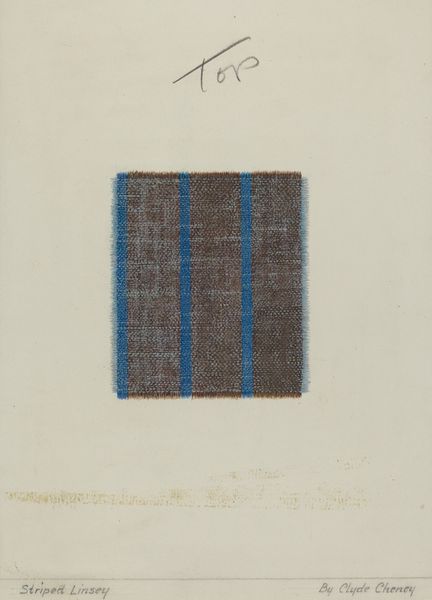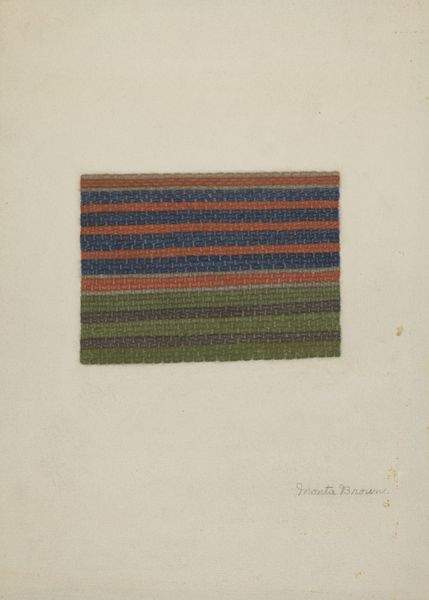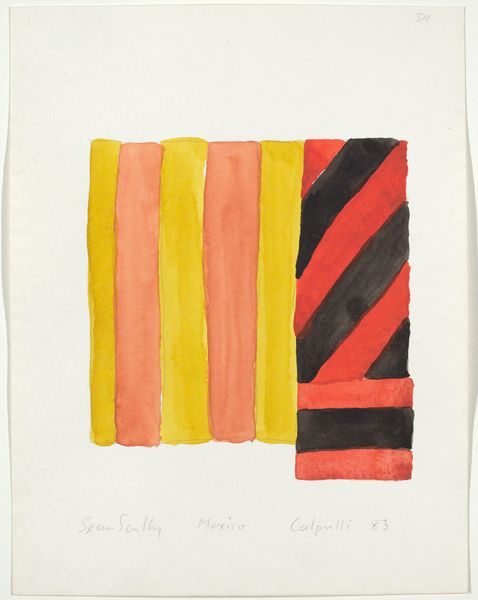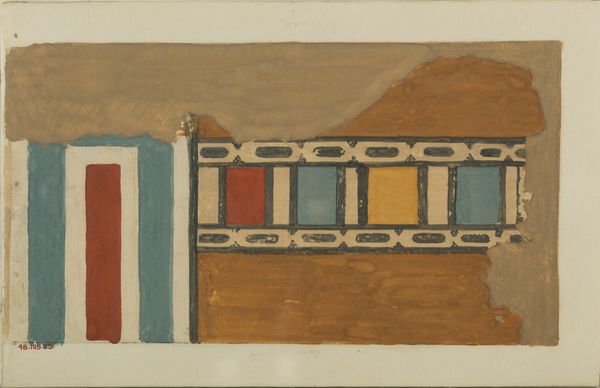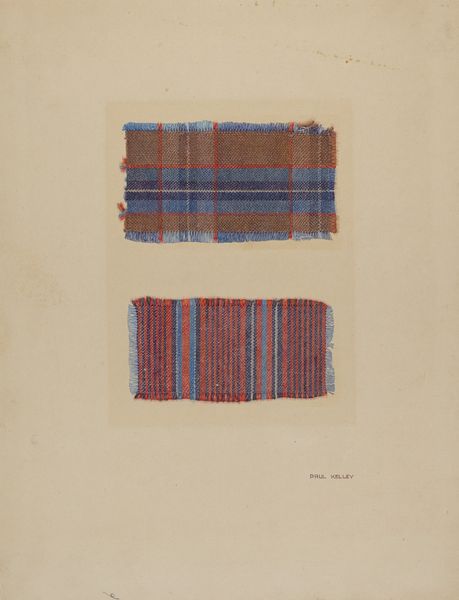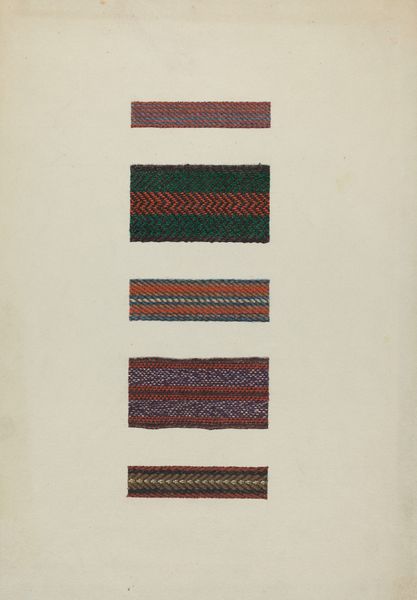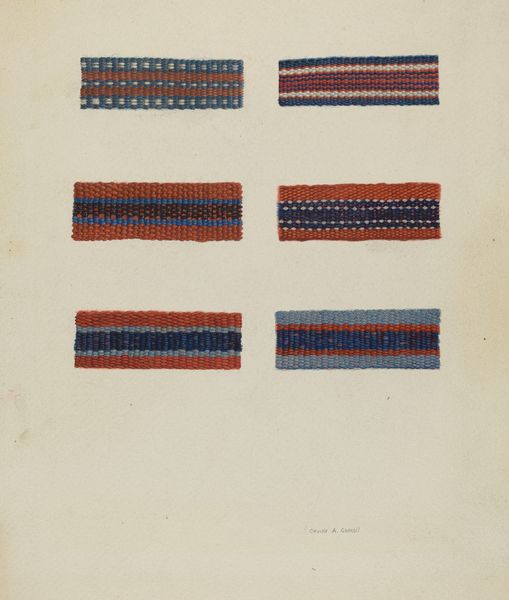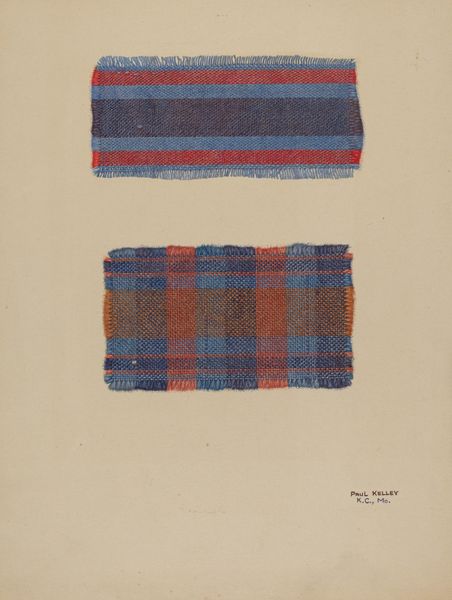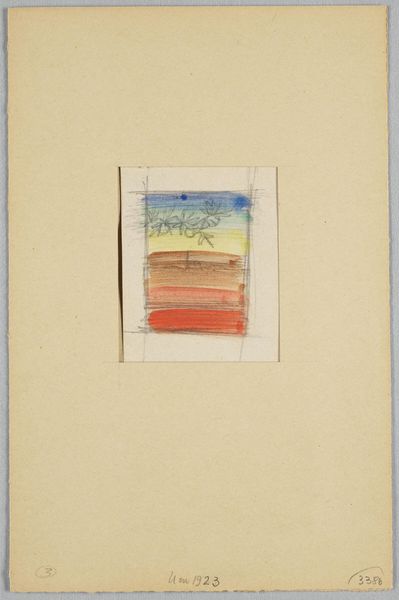
drawing, painting, textile, watercolor
#
drawing
#
water colours
#
painting
#
textile
#
watercolor
#
geometric
#
abstraction
#
watercolor
Dimensions: overall: 34.7 x 22.9 cm (13 11/16 x 9 in.) Original IAD Object: 60" wide; 50" long
Copyright: National Gallery of Art: CC0 1.0
Curator: Elgin Moncure Styll created this watercolor, titled "Silk Quilt - Roman Stripe" around 1939. What catches your eye first? Editor: There's a somber quality despite the varied palette. The dark reds and blues, mixed with a mustard yellow—they evoke a subdued, almost melancholic feeling for me. It feels like a memory fading. Curator: It's interesting that you pick up on that sense of melancholy. This work comes out of the Depression era, reflecting the artist's involvement in the WPA's Federal Art Project. Quilt-making was a deeply coded cultural practice for women, marking important life passages and community bonds. The "Roman Stripe" design carries its own symbolic meaning, evoking order, but also division, perhaps. Editor: That’s a fascinating tension—order versus division. The Roman Stripe pattern, reinterpreted through abstraction, sheds traditional connotations, but it also holds them. The horizontal lines, the repeating sequence… there’s a clear visual echo. I keep coming back to the zigzag stitching. The use of gold or yellow here might symbolize resilience and the beauty that persists even in hard times. Curator: Precisely. The linear progression reminds me of timelines and life narratives and challenges viewers to contemplate gender, class, and cultural dynamics within these patterns. In rendering it in watercolor, it further reframes notions of labour, class and skill involved with needlework versus the elite connotations associated with the so called 'fine arts'. Editor: Right. And it prompts one to consider themes of labor, domesticity, and female creativity—what narratives would have informed Styll's perception of his creation? Did the symbolism originate with his view of this cultural artifact and translate onto the picture, or was he appropriating already-coded imagery to speak to current socioeconomic struggles? Curator: That consideration speaks to a deeper intersectional approach to understanding the artwork—one that questions not only its creation but also its reception within its original socio-political climate. Editor: Indeed. It's this tension between personal reflection and cultural inscription that really animates the experience for me. This makes the whole composition emotionally engaging, like trying to piece together fragments of the collective history and psyche from a forgotten memory. Curator: It has certainly given us a fresh look at the way geometric forms carry cultural meaning in the visual language of textiles.
Comments
No comments
Be the first to comment and join the conversation on the ultimate creative platform.
